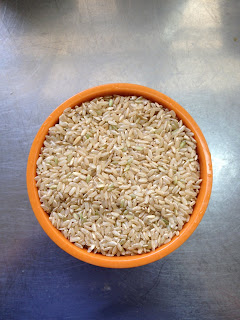In
America, you don’t always have to think about your next meal. By that I mean
that, if you want to hop in the car and take a day trip, or decide to spend the
afternoon in a neighborhood with which you’re not familiar, it’s reasonable
(especially in NY) to assume that you will be able to find something to eat at
some point. If you are a strict adherent of kashrut, you might not be able to
find a restaurant, but at least you will be able to find a selection of snack
food in any convenience or grocery store. You will, at the very least, be able
to find something to hold you over.
That’s
not really the case here in Okinawa. Don’t get me wrong – convenience stores
abound. It’s hard to drive five minutes without passing a Family Mart, a
Lawson’s, or both. But finding something to eat at these stores – that’s an
entirely different proposition. My Japanese is improving, but I’m still nowhere
near able to read nutritional labels, and lard and/or shellfish are hiding
everywhere here. As I’ve written about previously, I can’t even trust that
American snack foods manufactured in Japan are safe to eat. Luckily, Yoni and I
have managed to find one thing that’s often available in convenience stores,
malls, airports, etc – Onigiri.
Onigiri
are (or is – in Japanese there’s no distinction between singular and plural
nouns) a form of Japanese fast food, essentially created to make rice portable.
As you can see in the picture above, onigiri are often triangle-shaped, and are
almost always stuffed with something. Traditional stuffings include pickled
plums, kelp, salted salmon, fish roe, and miso paste. Non-traditional stuffings
include tuna fish salad (like from a deli) and wakame seaweed mixed with
wasabi-flavored mayo (really yummy). When there’s nothing else to eat in sight,
Yoni and I are often able to find Onigiri to get us through.
Since, in
addition to depending on them, I also really like to eat them, I thought I’d
try my hand at making some at home. Here’s how you do it.
Cook some
rice to the package specifications (I used brown, but white is more
traditional).
I decided
to make salmon Onigiri using canned salmon. (Next time, I will try to use fresh
salmon.)
I also
added this salmon rice mixture to the hot, cooked rice to add a little extra
something. This mix, which someone who reads Kanji told me is free of
non-Kosher products, has little pieces of dehydrated salmon and greens that
come back to life when incorporated into the rice.
After all
the ingredients were prepped, I used my best rice-ball-making instincts to
figure out how to shape them. Basically, I put a big blob of rice onto my hand,
stuffed some salmon in the center of the blob, and added more rice on top. I
tried to seal all of the salmon inside, and shape the rice into a triangle.
My
mother-in-law, Tova, had sent us some sheets of nori (seaweed used for
wrapping), and so I decided to wrap half of the Onigiri since that’s usually
how you would buy them.
All in
all, it’s definitely easier to buy Onigiri than it was to make them. That being
said, though, if I were planning a Japanese-style picnic or needed some
road-trip food, I would definitely make Onigiri again. And as I’ve never seen
them sold in the US, I’d better keep
practicing, because I won’t want to give them up when Yoni and I eventually
come home!







Adorable! As you are Leo!!! Based on this little description of your cooking adventure, you are doing amazing from my perspective!!! I love reading your blogs....keep them coming guys. Last week's was a difficult one from Yoni and my heart went out to him and the family that he was counseling. We here in the USA are so lucky to have you sharing your experiences with us! It is an adventure that I for one will never have but I am living it vicariously thru you guys!!! Thank you and shabbat shalom!!!!! xoxo Lorain
ReplyDeleteWhat she said! Love you so much and can't wait for you to make me some Onigiri upon your return...
ReplyDelete